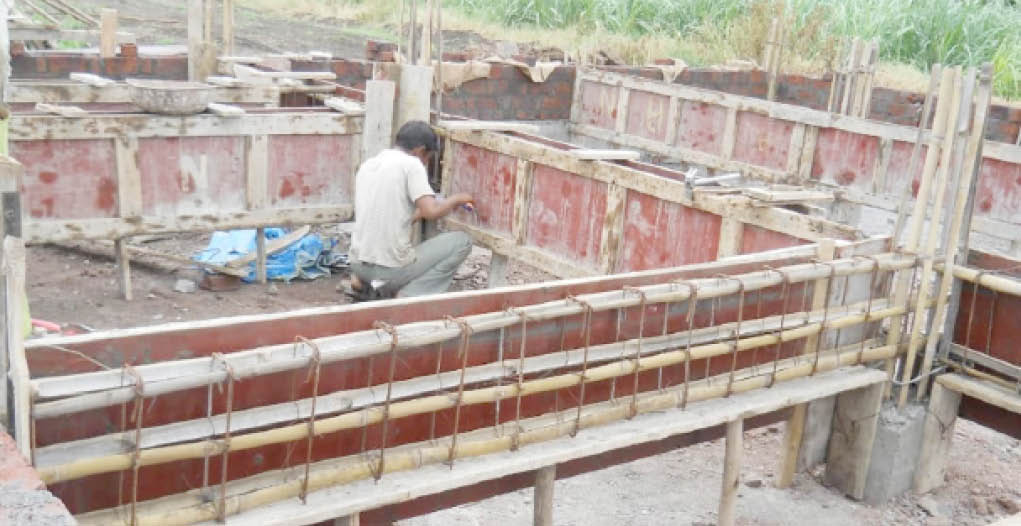Due to the rising cases of building collapse in the country, some experts in the built environment have raised concerns on the use of bamboo sticks in the reinforcement process during construction of buildings, especially highrise structures.
There are worries about the mechanical properties of bamboo when used as a substitute for steel in concrete. Some researchers say the elasticity of bamboo in tension is about one tenth of steel, which means bamboo-reinforced structures are prone to have higher deflection, wider cracks and lower load or moment bearing capacity than steel.
Dimensional changes of bamboo due to moisture, temperature and load relative to concrete is also said to be different. That bamboo swells and pushes concrete due to water absorption when curing begins. But as it dries, it shrinks back and hence creates some void between concrete and the bamboo interface.
Bamboo is also said to be susceptible to environmental degradation and insect attacks.
But some of the experts who spoke with Daily Trust urged universities and the relevant engineering institutions to do research on the local material and come up with a standard form of using it.
A former president of the Nigerian Institute of Structural Engineers (NIS), Engr. Victor Oyenuga, said the use of bamboo must be based on facts and figures, adding that universities and consultants should carry out research on its use.
“Let the universities and the consultants carry out engineering tests and determine that these things are in order.
“For example, when you are talking of bamboo, are you going to strip them? Rod has diametre. When we design, we specify the diametre based on the result we are getting. We specify the diametre and the number. For example, I will say use 3/120, that’s diametre 20, three of them for this beam.
“Bamboo has several diameters. What size are you putting inside the beam? Who has carried out a load test we normally carry out and discovered that if you have bamboo of these diameters, two of them or one of them would be able to do the work?” he queried.
He stressed the need to carry out test on bamboo before determining how to use it.
“Just as I have said, rods have diameters and when we get to the area of steel, then we now determine which rod to use. If it is 16mm, if it is 20mm or 25mm, you determine the number. Then, are you going to strip the bamboo into pieces or are you going to use them as a whole?
“And if you are using them as a whole, what is the diametre you are recommending? You can’t control the diameters of these things; they are natural things. But for iron rod, you control the diametres because you pour the iron, molten iron inside the mould and you come out with the diametres you require. You can’t do that with bamboo,” he added.
Oyenuga said as a structural engineer, he goes by the books, and practices what has been standardised.
He added there is also the need to ascertain the life of the bamboo before being used.
“Will it rust after sometime? What should be the water content of the bamboo itself? Are you going to season the bamboo? Is it raw, is it dry? These are facts and figures that somebody has to sit down and iron out,” he said.
He said the Association for Consulting Engineers in Nigeria (ACEN) should be tasked to carry out research on the workability of the bamboo.
“Let the consultants look at it, practise it and come out to say yes it is okay or it’s not okay,” he added.
Engr. Emmanuel Madu, the Chief Executive Officer (CEO) of Shungrila Estate Limited, on his part said he would be hesitant in using bamboo in his important construction projects.
He called on the relevant institutions to conduct research on bamboo and come out with a definitive result which would become the standard for its use in all engineering works.
“With the difficulty in the generalization of the mechanical properties of bamboo when compared to steel and the vulnerability of bamboo to environmental degradation and insects attacks; and the non-guarantee of its durability, which is dependent on the species types, ages and conservation conditions, including other important engineering properties relative to steel, I will be hesitant in using it in reinforced concrete,” he said.
Also, a Lagos based Quantity Surveyor, Omodara Aanuoluwapo, said the use of bamboos in place of steel has been deliberated upon and has been practised to a certain degree in the country.
“While it has been established that bamboo can form part of the structural member, it can only be limited to some structural works say beams and structural member for simple building such as bungalow. For concrete with large span, bamboo would never be used because it does not possess the tensile properties to withstand the load.
“Also, highrise building contractors would not jeopardise their works because bamboos are not weather resistant.
“Another important factor is that, incase the concrete work is unsuitable, and the work is destroyed, the reinforcement can be salvaged and reused, while for bamboo, you would have to buy new sets of bamboo,” he said.

 Join Daily Trust WhatsApp Community For Quick Access To News and Happenings Around You.
Join Daily Trust WhatsApp Community For Quick Access To News and Happenings Around You.

